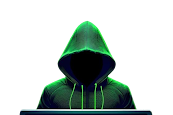Awareness about Cyber Threats
Thing You Should Know to Never Get Hacked
In today’s digital landscape, cybersecurity is no longer a luxury—it’s a necessity. Cyber threats are evolving rapidly, targeting individuals and organizations alike. Whether you're a tech enthusiast or a complete novice, understanding the fundamentals of how to protect yourself online is crucial.
Imagine this scenario: Sarah, a mid-level manager at a small marketing firm, believed she was safe online. She used the same password for multiple accounts and didn’t think much about those phishing emails in her inbox. One day, she clicked on a link from what seemed to be a legitimate email from her bank. Minutes later, her accounts were compromised, and her company's data was at risk.
Sarah’s story is all too common, but it doesn’t have to be. Here’s what you need to know to ensure you don’t find yourself in a similar situation.
1. Strong Passwords: Your First Line of Defense
Sarah’s first mistake was using weak, easily guessable passwords. A strong password is a crucial barrier against unauthorized access. Here are some tips:
Use Complex Passwords: Combine upper and lower case letters, numbers, and special characters.
Unique Passwords for Every Account: Don’t reuse passwords across multiple platforms.
Password Managers: Use a reputable password manager to generate and store complex passwords securely.
2. Recognize Phishing Attempts
The email Sarah received looked legitimate, but there were subtle clues that could have tipped her off to the scam. Phishing attacks trick users into revealing personal information or clicking malicious links. Here’s how to spot them:
Check the Sender’s Email Address: Often, phishing emails come from addresses that look similar to legitimate ones but have slight variations.
Look for Generic Greetings: Legitimate businesses usually address you by name, not “Dear Customer.”
Hover Over Links: Before clicking, hover over links to see where they really lead.
3. Two-Factor Authentication (2FA)
Even if Sarah’s password was compromised, 2FA could have saved her. Two-factor authentication adds an extra layer of security by requiring a second form of verification, such as a code sent to your phone or an app. This means that even if a hacker has your password, they’d still need your phone or physical token to access your account.
4. Keep Software and Systems Updated
Outdated software is a hacker’s playground. Sarah’s company had not updated its systems in months, leaving them vulnerable to known exploits. Regular updates patch security flaws and are vital for protecting against new threats.
Enable Automatic Updates: This ensures you’re always protected with the latest security patches.
Update All Devices: Don’t forget to update not just your computers but also your phones, tablets, and IoT devices.
5. Safe Browsing Habits
Sarah often browsed the web without thinking twice about the sites she visited or the links she clicked. But safe browsing is essential to avoid malware, phishing sites, and other online threats.
Stick to Trusted Websites: Avoid websites that are unfamiliar or seem suspicious. These often host malware or attempt to steal your information.
Use a Secure Browser: Ensure that your browser is up-to-date and consider using a privacy-focused browser that blocks trackers and malicious sites.
Be Cautious with Downloads: Only download files from reputable sources, and always scan downloads with your antivirus software before opening them.
6. Be Cautious with Public Wi-Fi
Sarah often worked from coffee shops, connecting to unsecured public Wi-Fi networks. Hackers can easily intercept data transmitted over these networks. Protect yourself by:
Using a VPN: A virtual private network encrypts your internet connection, making it much harder for hackers to intercept your data.
Avoiding Sensitive Transactions: Refrain from accessing sensitive information, such as banking apps, while on public Wi-Fi.
7. Back Up Your Data Regularly
In the unfortunate event that Sarah’s data was compromised, having regular backups could have mitigated the damage. Regular backups ensure that you have a copy of your important data in case of a breach, ransomware attack, or other data loss incidents.
Use Both Cloud and Physical Backups: A combination of both provides an extra layer of security.
Automate Your Backups: Schedule regular backups to ensure your data is always protected.
Conclusion: Awareness is Key
Sarah’s experience is a reminder of how easy it is to become complacent in our digital habits. By understanding and implementing these basic cybersecurity practices, you can greatly reduce the risk of being hacked.
Remember, cybersecurity isn’t just about complex systems and advanced knowledge—it’s about being aware and making informed decisions every day. The key to never getting hacked is staying one step ahead of the attackers. Equip yourself with the knowledge and tools to protect your digital life, and encourage others to do the same.











Comments
Post a Comment